We’re very lucky that Government House has such a spectacular setting, with 36 acres of manicured gardens, native woodlands and heritage buildings. The Estate of the Lieutenant Governor of British Columbia is even designated a National Historic Site of Canada.
I love walking around the beautiful gardens with Macduff and never stop admiring the incredible work of the Friends of Government House Gardens Society. Their tireless volunteer efforts keep the grounds of Government House in bloom all year round. Did you know the grounds are open every day of the year from dawn to dusk?
Now that we’re at the height of summer, here’s a little guide to the gardens found around Government House. Feeling lost? Check out this interactive map for garden locations.
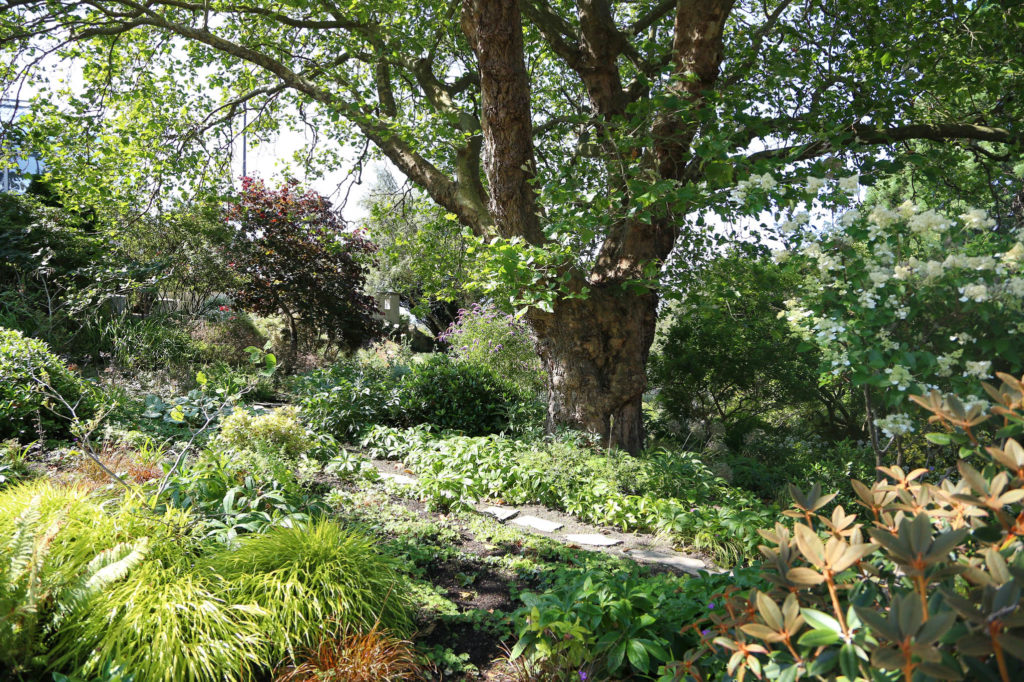
Cut Flower Garden 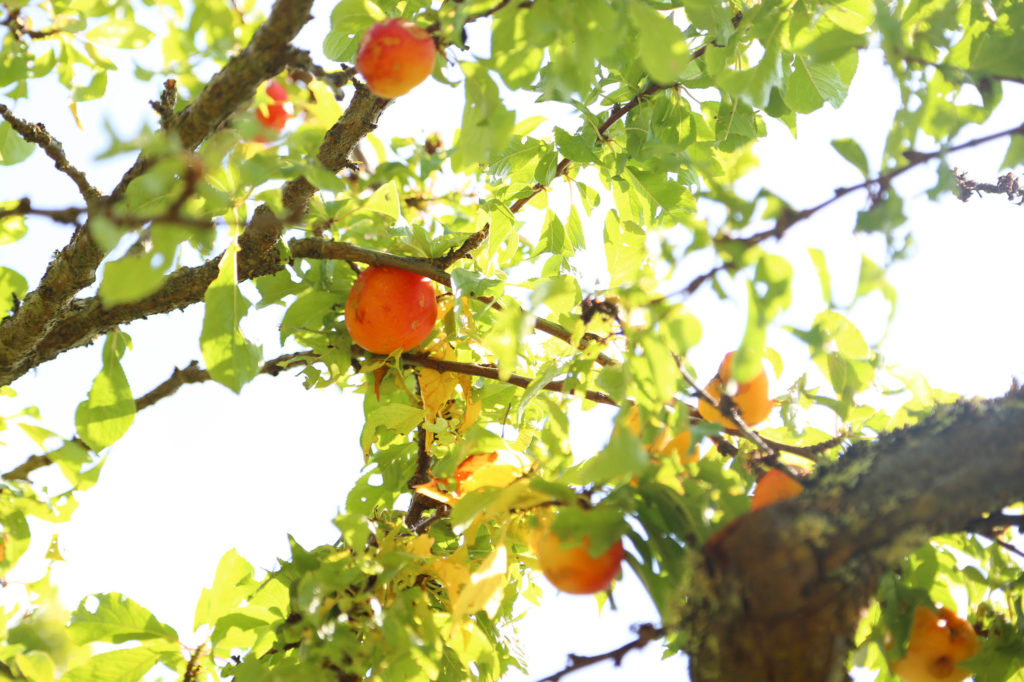
Fruit in the Dorothy Lam Orchard
British Columbia Native Plant Garden
This garden features plants of British Columbia from the University of British Columbia Botanical Garden. The planting of this garden was a project by the horticultural class of Camosun College in Victoria.
Cut Flower Garden
The Cut Flower Garden is dominated by a magnificent London plane tree which provides shade for hostas, hellebores, primulas and other shade-loving plants. Sunny areas are planted with herbaceous perennials and foliage plants including hardy geraniums, Crambe cordifolia, artemisia “Powis Castle” and South African phygelius species. Rocky areas are home to euphorbia species and potentilla, “Abbotswood Silver”.
Dorothy Lam Orchard
This small orchard is dedicated to the late Mrs. Dorothy Lam, former chatelaine of Government House (1988-1994). The orchard includes apples, plum and quince trees and each year the fruit is used by the Government House Kitchen wherever possible.
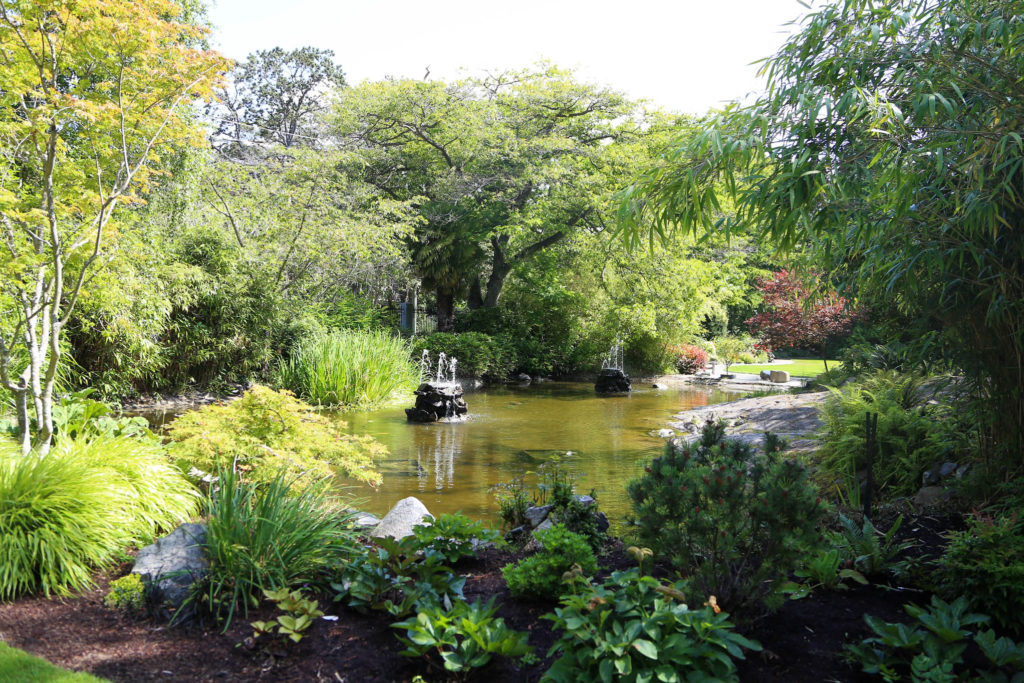
Duck Pond 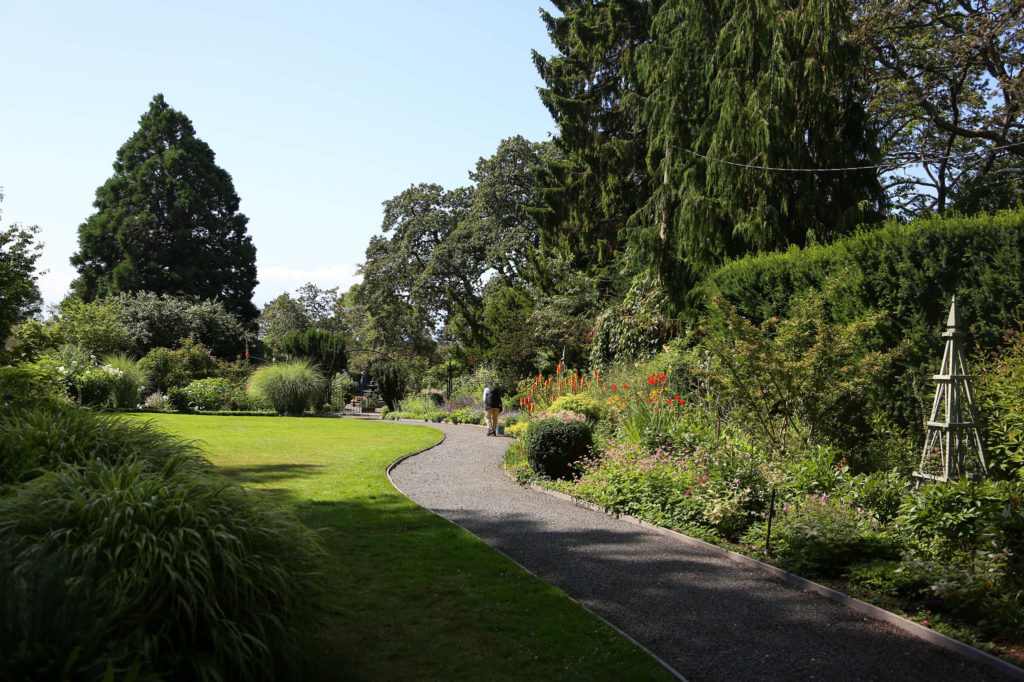
English Country Garden 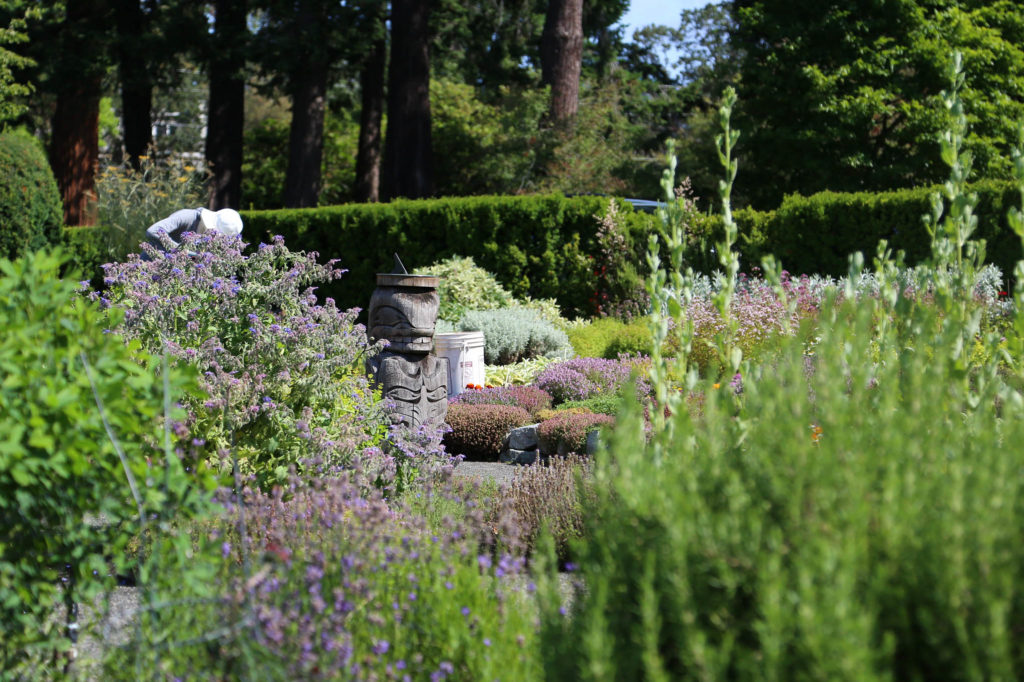
Herb Garden 
Iris Garden
Duck Pond
The Duck Pond is surrounded by bamboo and features a laburnum tree. Groups of Iris pseudacorus and Acorus calamus are planted in the water and the pond is home to a variety of ducks, turtles and many forms of birdlife.
English Country Garden
The English Country Garden is located just inside the main entry gate of the Government House grounds. Like the garden of an English country house, it is intended to be a splendid show of flowers for the summer months. In spring there is a colourful display of flowering bulbs including primulas, pulmonarias and hellebores. Many traditional cottage garden plants are also featured, including campanulas, forget-me-nots and foxgloves. Herbaceous perennials, flowering shrubs and trees provide interest year round.
Herb Garden
Many of the herbs in this garden are grown for use in the Government House Kitchen. A medlar tree and a quince tree, popular in traditional herb gardens, are also found. The centrepiece of the Herb Garden is a sundial supported by a carving of an orca, created by Salish carver Aubrey La Fortune. Andrew Yeoman of Ravenhill Herb Farms designed the garden, donated plants and advised the Friends of Government House Gardens Society on maintenance.
The Joy Flint/BC Iris Society Garden
Two iris borders line the path, one of blue and white iris, and one featuring iris provided by the BC Iris Society. Some Iris bloom from February through to September, but the optimal time for Iris is May into June.
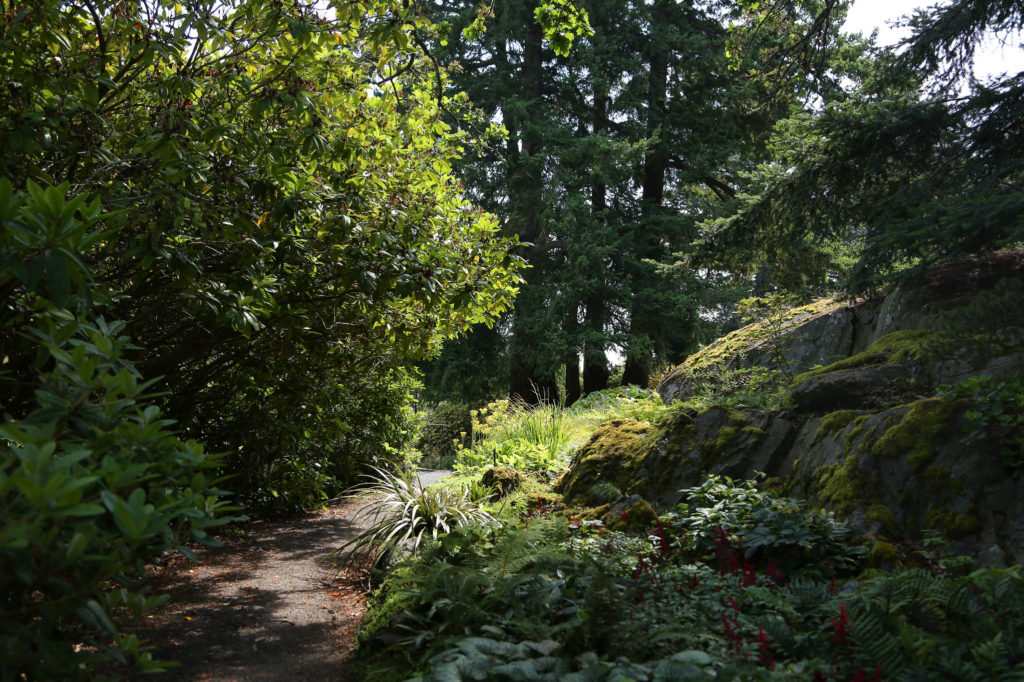
A shaded path along Pearkes Peak 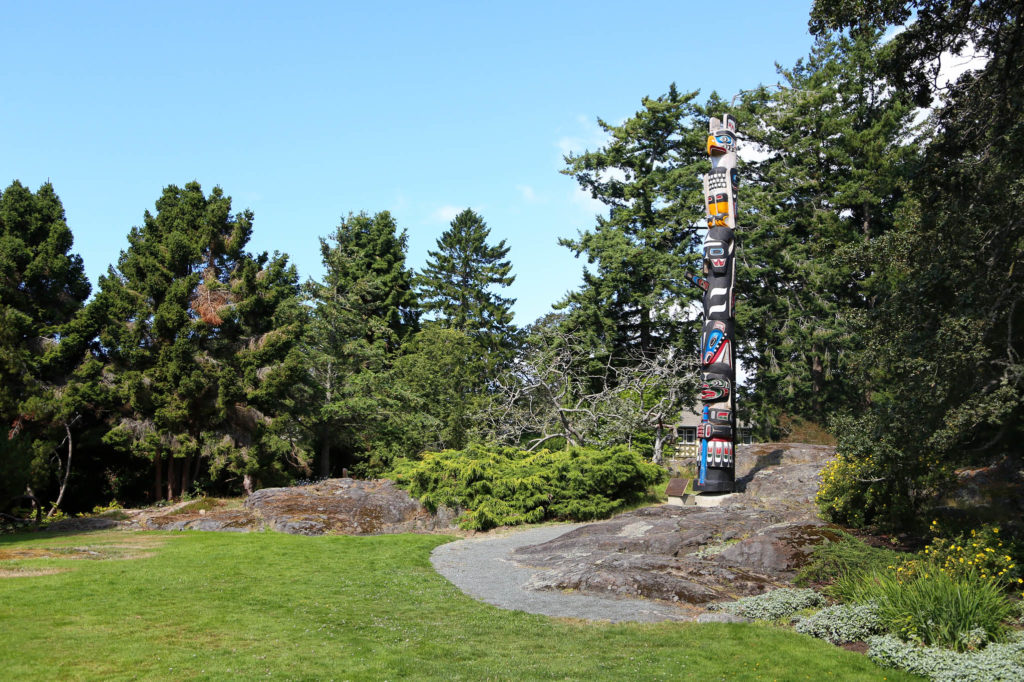
The pole Hosaqami
Lewisia Wall
The stone wall adjacent to the Cary Castle Mews is the ideal habitat for rare and sensitive lewisia species. The lewisia is planted in the tradition of the Lewisia Wall of the Royal Horticultural Society in England.
Pearkes Peak
Pearkes Peak is named in honour of former Lieutenant Governor George Pearkes, who enjoyed donning his Wellington boots to clear and plant the area. Pearkes Peak is one of the largest gardens on the property, consisting of three rocky areas separated by grass and paths. The vegetation consists of several Garry Oaks, ornamental shrubs, native plants, and bulbs.
Peter’s Rock
This natural rock outcropping adjacent to the Trades driveway is planted with ferns and native plants including pink and white Erythronium species.
Rock and Alpine Garden
The Rock and Alpine Garden features choice plants from the mountainous areas of the world. Most of the plants in this garden were started from seed and obtained from the Alpine Garden Society in London, the Scottish Rock Garden Club in Edinburgh and the Alpine Garden Club of BC in Vancouver.
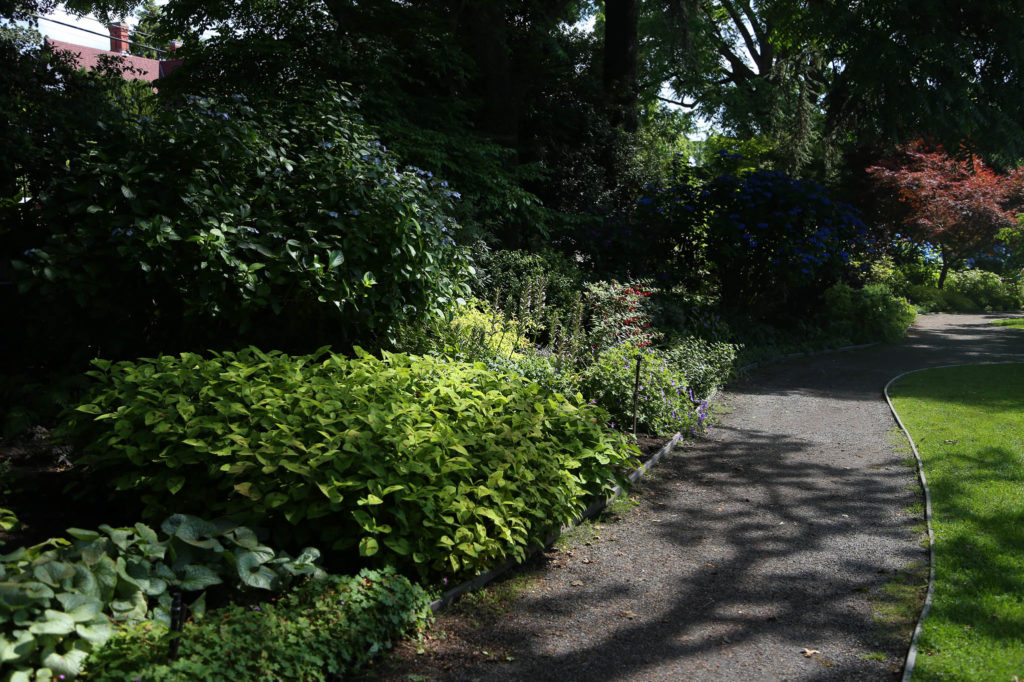
Rockland Border 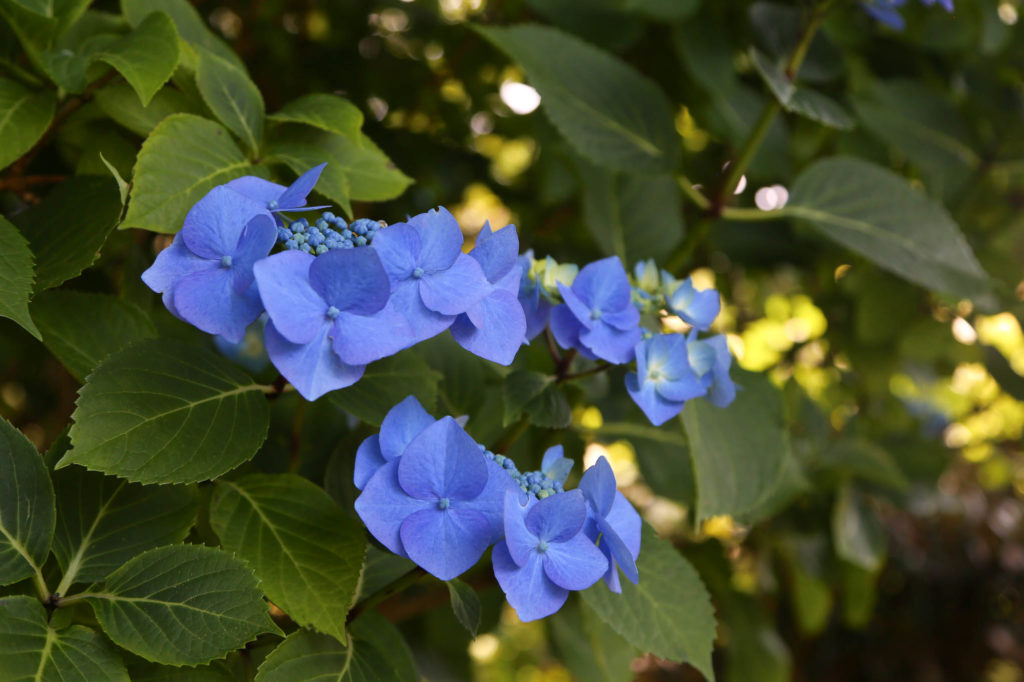
Hydrangeas along Rockland Border II 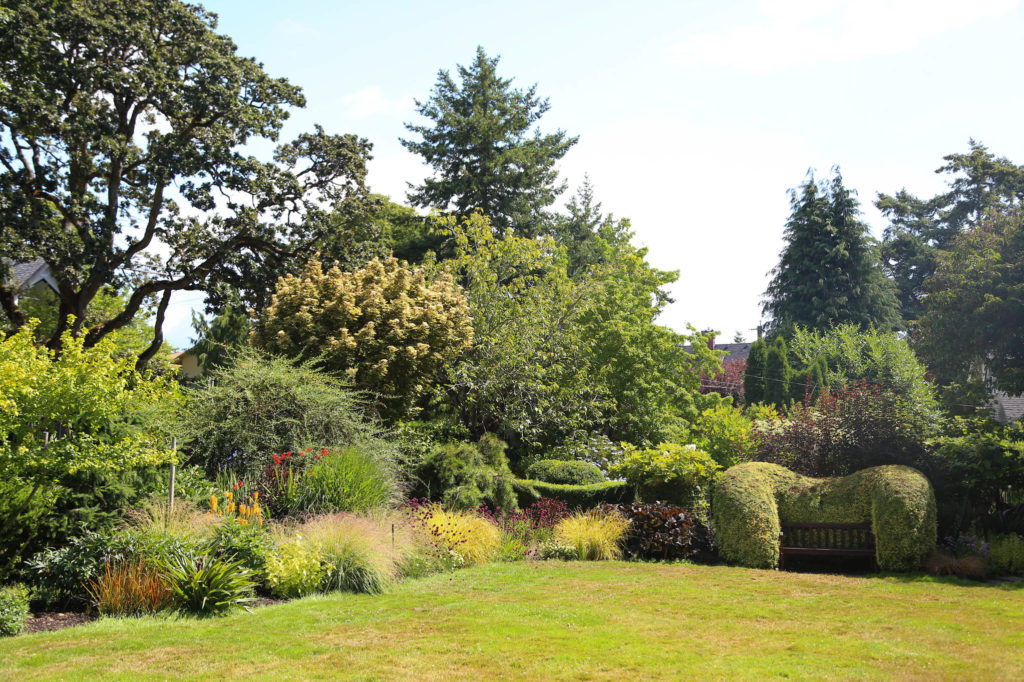
Rotary Garden 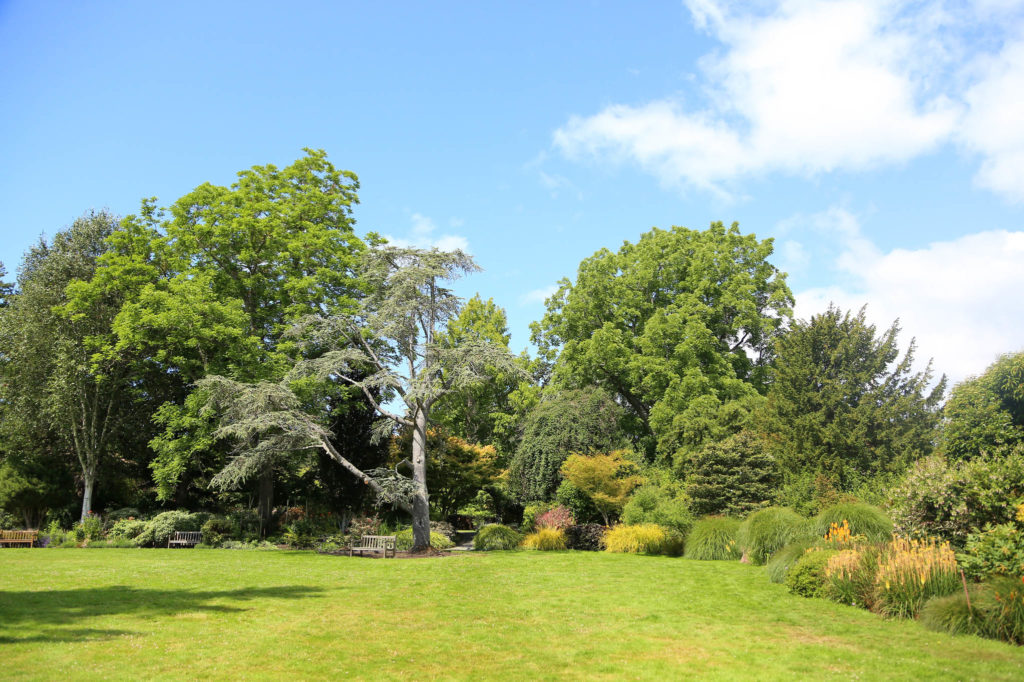
Rockland Border I
Rockland Border I parallels Rockland Avenue from the duck pond to the exit gate. This south-facing location offers one of the most spectacular borders in British Columbia. Plants include tropicals, such as ginger and Birds of Paradise, as well as ornamental grasses and flowering bulbs, creating colour and texture throughout the year. Rockland Border I is most sensational during the summer when the perennials are in full bloom.
Rockland Border II
Rockland Border II is shaded by magnificent trees. It is planted with a selection of hydrangea species, including the rare hydrangea sargentiana, Physocarpus opulifolius “Diabolo” and Fatsia japonica. Herbaceous perennials include a selection of hosta species, heuchera species, cultivars and ornamental grasses.
Rotary Garden of International Friendship
The Rotary Garden of International Friendship was the inspiration of Rotarian Alan Potter. Funds for the garden were contributed by Rotary clubs worldwide to finance a collection of trees and shrubs to represent the countries and regions of the world. The Harbourside Rotary Club of Victoria sponsored the project and summer flowering shrubs, herbaceous perennials and bulbs were planted and developed by a team from the Friends of Government House Gardens Society and Rotarians.
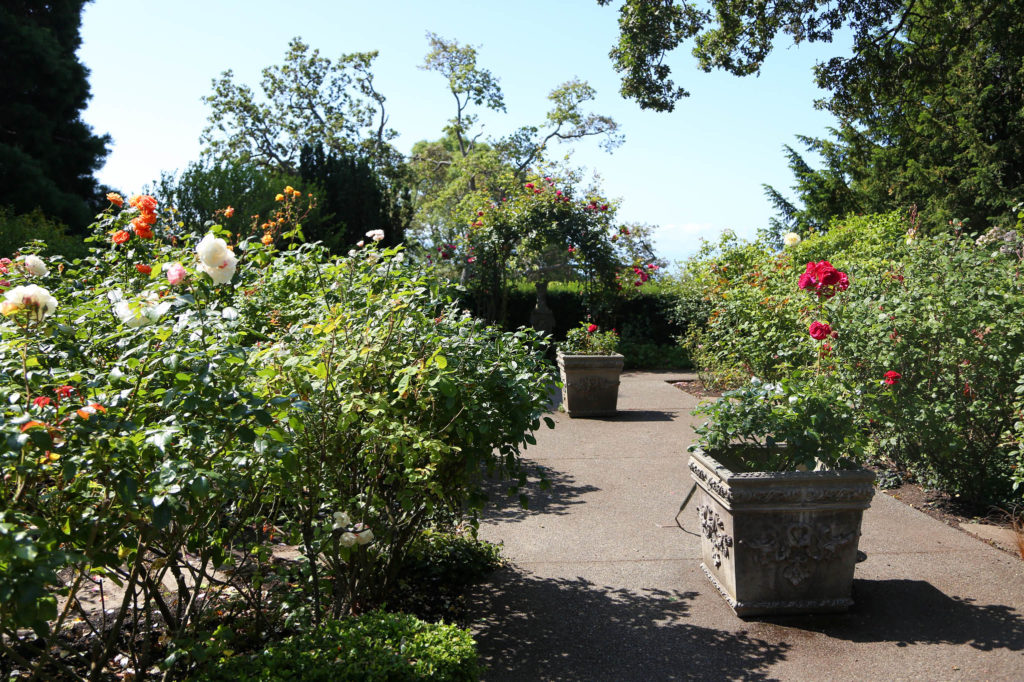
Sunken Rose Garden 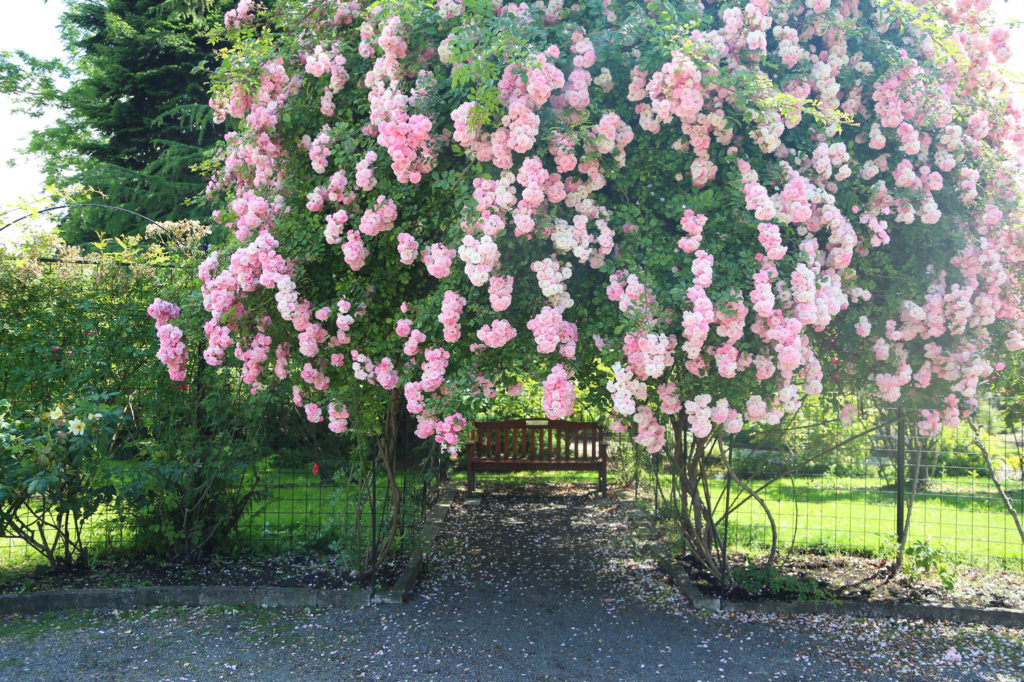
Victorian Rose Garden 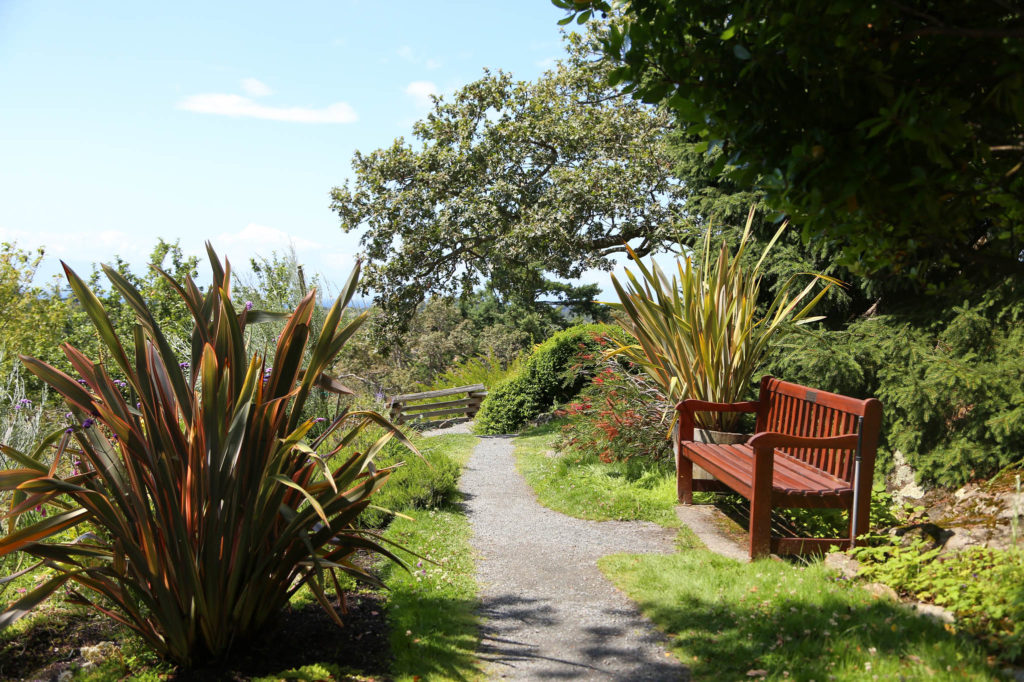
Terrace Gardens 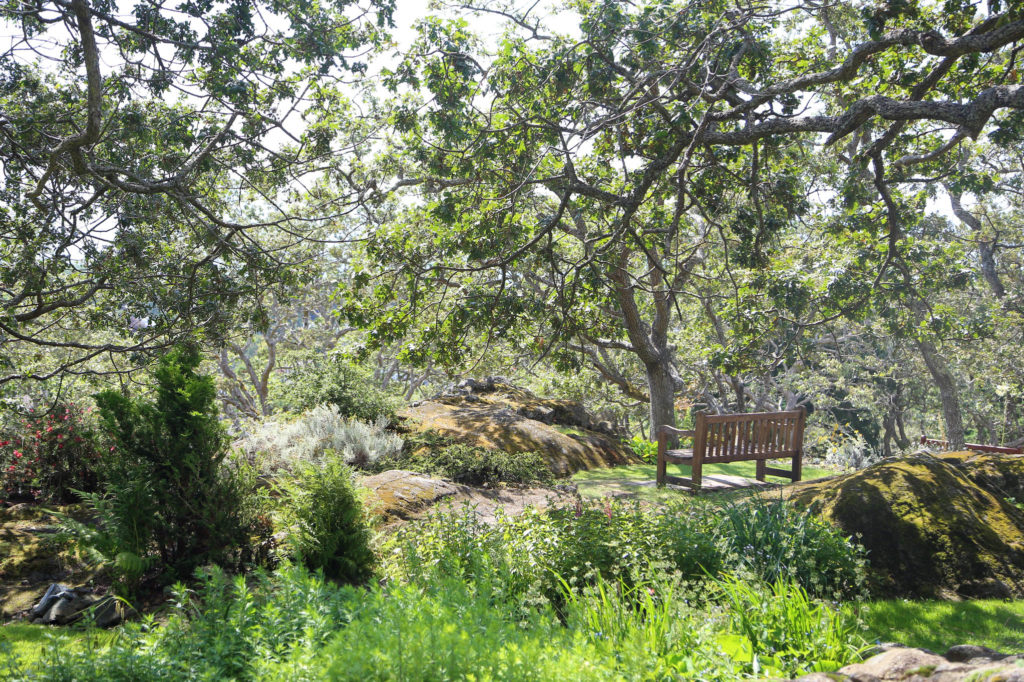
Terrace Gardens
Sunken Rose Garden
The Sunken Rose Garden is designed around a tiered fountain and is planted with a wide variety of scented roses, representing most of the major classes of modern and old roses. Many were gifts from British rose breeder David Austin and local nurseryman Robin Denning. The Sunken Rose Garden is in bloom June through October.
Terrace Gardens
The Terrace Gardens offer a spectacular view over the Woodlands, the Salish Sea and the Olympic Mountains. The Terrace Gardens feature an array of drought and wind tolerant plants. These include euphorbia species from Africa, grevillea species from Australia, hebe and leptospermum species from New Zealand, California ceanothusspecies and Romneya coulteri. Mediterranean plants are well represented including Cistus, Genista, Phlomis, Salvia and Thymus species. Plants with silver-grey foliage are a specific feature.
Victorian Rose Garden
The formal design of the Victorian Rose Garden is based on the plan for the Rose Garden at Warwick Castle in England, created by renowned 19th century gardener Robert Marnock. Boxwood-edged beds are planted with pink and white roses. Four benches at the main entrance of the Victorian Rose Garden commemorate former Lieutenant Governor David Lam and Mrs. Dorothy Lam, the Province of British Columbia and the British Columbia Buildings Corporation, who jointly financed the garden.
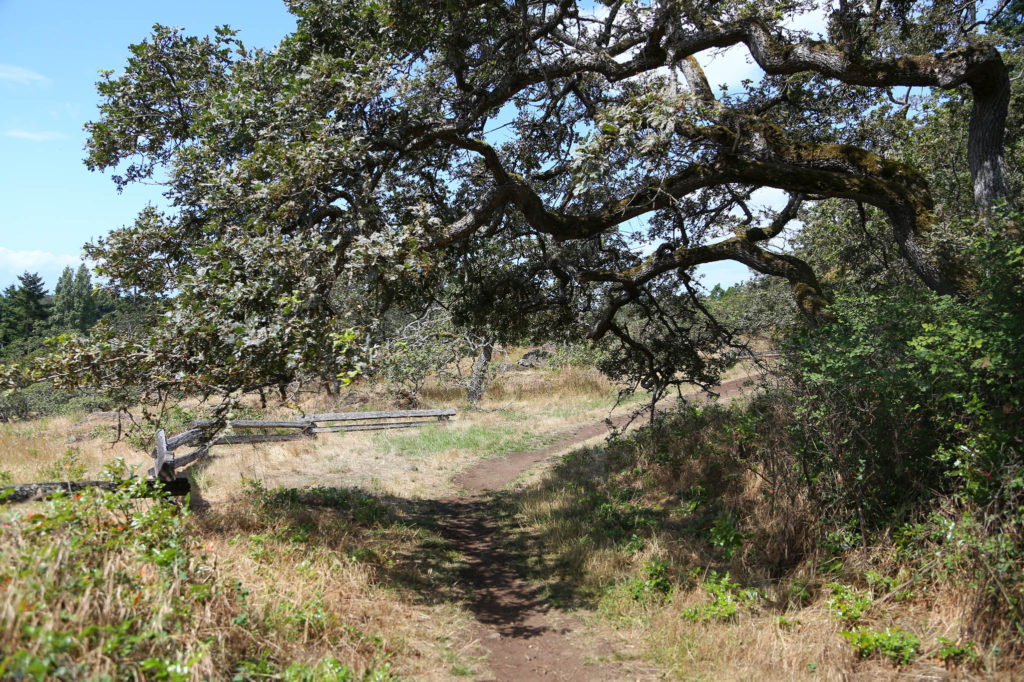
The Woodlands 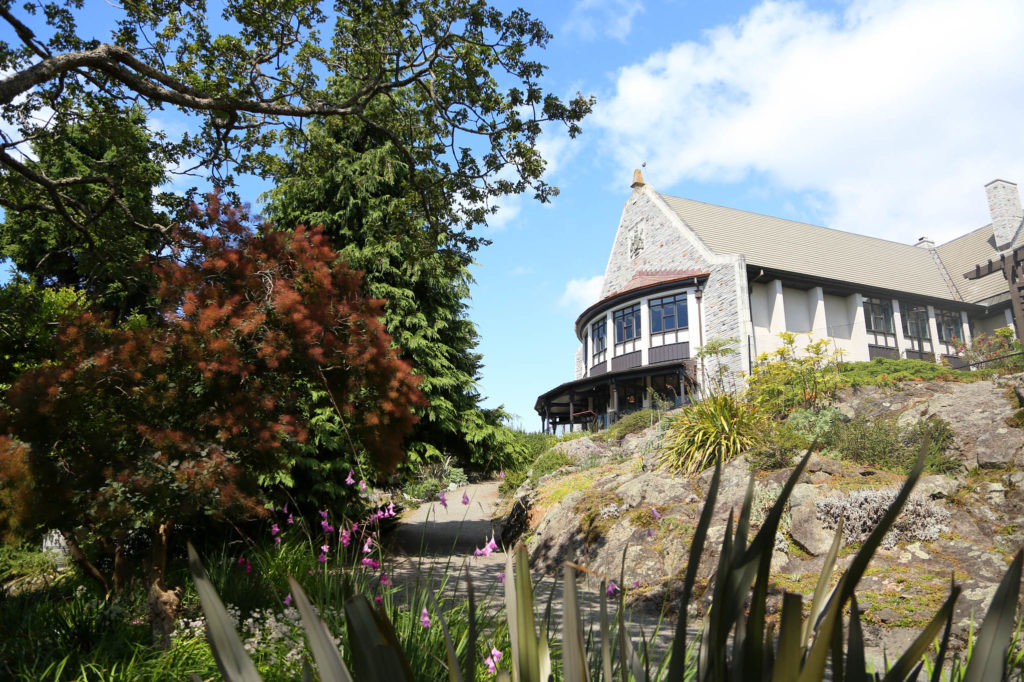
Stunning views of Government House along garden paths
Winter Garden
These winter and early spring flowering plants are in bloom from November to March. There is a splendid rare Chinese shrub Stachyurus praecox, numerous Hamamelis (Witch–Hazel) shrubs, Lonicera fragrantissima and Cornus mas. Primulas and flowering bulbs carpet the ground below the shrubs.
Woodlands
The Woodlands are a unique example of a Garry oak ecosystem in an urban setting. Along with Garry oaks, the 8.9 hectare (22 acre) Woodlands feature a tapestry of wildflowers, Camas, western buttercup and white fawn lilies. The aim of the Friends is to protect, preserve and restore this Garry oak habitat while providing the public with opportunities for appreciation and education. There is open access to the Woodlands with a public pathway providing visitors a view of this native British Columbia area.
Interested in volunteering with the Friends of Government House Gardens Society? Visit their website for more details.

